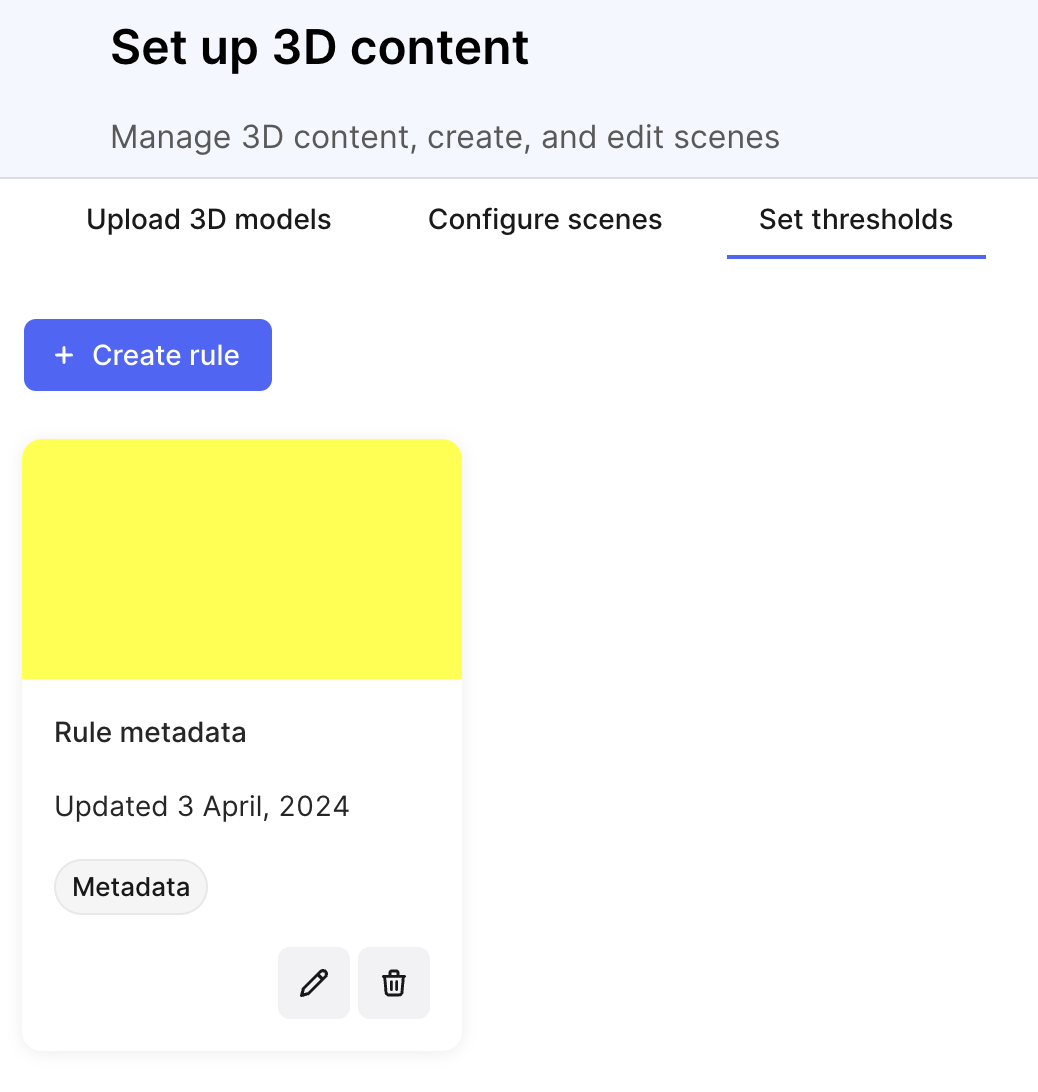pipe_pressure of the linked pipe pressure assets, indicates low values, yellow indicates medium values, or red when the thresholds are breached.
You can create nested thresholds with AND or OR operations. You can also create nested operations and groups of expressions for a specific type of output.
You can set thresholds for metadata fields from assets and time series contextualized in 3D.
Before you start
Make sure you create and set up a data model the first time you create a rule.Set a threshold
1
Create a thershold
- Navigate Data management > Configure > 3D.
- Switch to Set thresholds and select + Create rule.
- Name the threshold.

2
Add a rule
Define the rules for your thresholds.
- Select + Add rule.
- If the rule is valid, select the color the overlay should give the 3D node from the Fill dropdown.
-
Select the trigger type: Asset metadata string, Metadata numeric, Time series, or Data model.
The data type for a data model supports only
string,boolean,numeric, anddate time. - Add the metadata or time series field. When you start typing, you can view the first five items retrieved from CDF based on the metadata prefix. For data model trigger type, select the Data model, Category, and Property.
- Select Operator.
- Define the Criteria.
- Select + Add line to add another line to create nested operations or Add group to add another group to build a rule for scenarios with diverse conditions.
- Select Save to publish the rule. The rule is now accessible in search.

Nested operations
To create a nested operation, select + Add line. Nested operations for threshold rules are useful in complex scenarios when:- Multiple conditions must be met simultaneously.
- Thresholds depend on variable relationships.
- Criteria are hierarchical.
- You need to combine logical operators.
- Scalability is required.
Grouped rules
By grouping threshold rules, you can easily manage diverse conditions and ensure clarity in situations with different scenarios. To group the thresholds, select Add group. It is best if you group the threshold rules for the below scenarios where:- Different sets of conditions govern distinct outcomes or actions.
- Thresholds vary based on specific categories or contexts.
- Rules need organization for clarity and management.
- Complex decision-making requires segmented criteria.
- Scalability and modifiability are essential for rule management and updates.